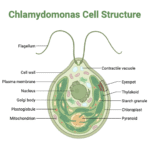Basic Microbiology 10 Views 1 Answers
What is agglutination inhibition? Briefly state one application of this method.
What is agglutination inhibition? Briefly state one application of this method.
Answered
Agglutination inhibition is a diagnostic technique used to detect the presence of specific antigens or antibodies in a sample. It involves a reaction where agglutination (clumping) of particles is prevented or inhibited by the presence of the target antigen or antibody.
How it works:
- Preparation: Particles (such as latex beads) coated with a specific antigen or antibody are mixed with a sample containing unknown levels of the corresponding antibody or antigen.
- Reaction: If the target antigen or antibody is present in the sample, it will bind to the particles and inhibit their ability to agglutinate when mixed with a corresponding partner (antigen or antibody). Without the target, the particles will agglutinate.
Application:
- Detection of Specific Antibodies: Agglutination inhibition is commonly used in clinical laboratories to detect the presence of specific antibodies in a patient’s serum. For example, it can be used to diagnose infections or determine the presence of antibodies to certain pathogens by inhibiting agglutination of antigen-coated particles.
Did this page help you?




